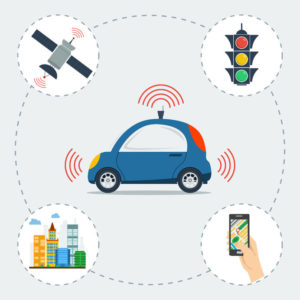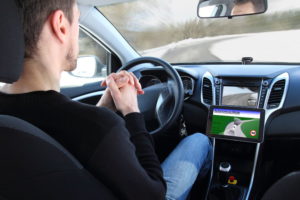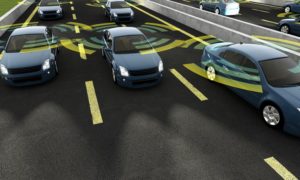The future may be closer than we think. Self-driving cars are being tested by a number of different manufacturers from Toyota to Google and more. Driverless cars may eventually reduce or replace the need for human input on the road altogether. But how do self-driving cars work?
How do Self-Driving Cars Work?
The technology that goes into self-driving cars have a lot to take into consideration from traffic lights, signs, pedestrians, traffic, and more.
It can be easy to think that autonomous vehicles are controlled by an omnipotent, remote control center somewhere and that there are rules upon rules about how cars should act in every conceivable scenario.
 The reality is that each car has an individual control system that relies on a combination of GPS, radar, lasers, and cameras to judge what’s around it. This includes pedestrians, obstacles, obstructions, other cars, and any other scenario that might crop up on the road.
The reality is that each car has an individual control system that relies on a combination of GPS, radar, lasers, and cameras to judge what’s around it. This includes pedestrians, obstacles, obstructions, other cars, and any other scenario that might crop up on the road.
Driverless vehicles largely use lidar, a term short for ‘light detection and ranging’, to “see” what’s around them. Lidar is a system that produces a 3D image of everything surrounding the car in real-time. The vehicle’s onboard control system then interprets these findings in conjunction with cameras, radars, GPS tracking, as well as deliberative architecture to respond to situations as they unfold.
Deliberative architecture is the technology capable of making decisions by combining the 3D map that is constantly generated by lidar and cameras and using that information to navigate among other cars, avoid obstacles and pedestrians, and even find shortcuts around traffic delays.
Driverless cars have what are known as ‘actuators’ to control things like acceleration, braking, and steering. Just like a person reacts when someone swerves into their lane, self-driving cars receive a signal from the onboard computer to either move or apply the brakes based on what’s around it.
 At this time, fully roboticized cars do not exist. As the technology continues to develop and improve, driverless cars will continue to have steering wheels, brakes, and a manual override, as well as seatbelts for passengers. These are known as ‘redundant systems’ and allow passengers to regain control of the vehicle in the event of a situation that the car cannot interpret.
At this time, fully roboticized cars do not exist. As the technology continues to develop and improve, driverless cars will continue to have steering wheels, brakes, and a manual override, as well as seatbelts for passengers. These are known as ‘redundant systems’ and allow passengers to regain control of the vehicle in the event of a situation that the car cannot interpret.
Still a Long Way to Go Before Self-Driving Cars are a Regular Feature on the Road
Eventually, the detection systems on driverless cars will be more accurate than human interpretation. Radars and lidar will be able to ‘see’ in conditions such as heavy rain, snow, or fog, or night. With current technology, cars are still limited by distance. Toyota is aiming to test self-driving cars on the road as early as 2020.
 There are lots of benefits to consider when it comes to self-driving cars. They have the potential to:
There are lots of benefits to consider when it comes to self-driving cars. They have the potential to:
- Reduce road deaths
- Reduce fuel consumption
- Improve the mobility of elderly or disabled people
- Free up time for the morning commute
Many advances need to be made before autonomous cars can adapt to all scenarios, and it will likely be a long time before these vehicles become a regular feature on the road.
Now that you know how self-driving cars work, you can share your newfound knowledge about this exciting new technology with friends and family.










Leave a Reply
You must be logged in to post a comment.